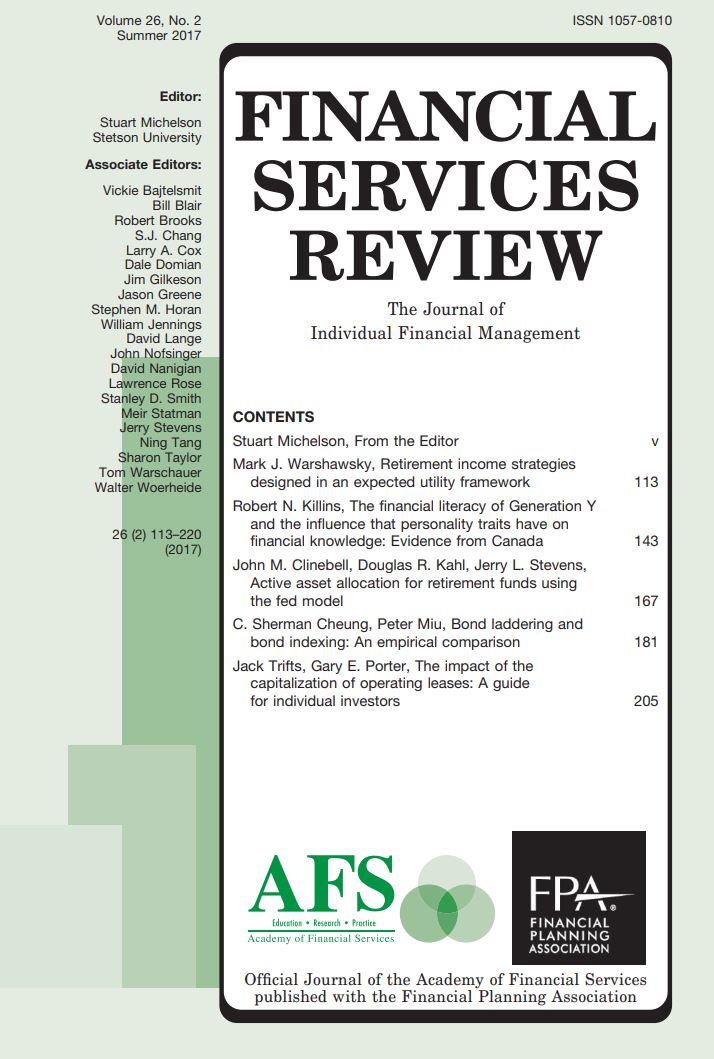Active asset allocation for retirement funds using the fed model
DOI:
https://doi.org/10.61190/fsr.v26i2.3306Keywords:
Market Timing, Kalman Filter, Active Asset AllocationAbstract
Active asset allocation, also known as market timing, is controversial but potentially effective for individual investors and financial advisors. Many studies support market timing based on the relationship between the aggregate earnings yield on equities and the intermediate Treasury bond yield, known as the Fed model. Nevertheless, skeptics point to common flaws in these studies and challenge the validity of the Fed model. In general, returns from timing models are difficult to adjust for transaction costs and tax effects from short term gains and losses. In almost all cases, there is data mining from reporting results over the same period used to build the timing model. Our study addresses these concerns directly. We control the transaction costs and tax effects by focusing on funds available for retirement accounts within a Vanguard fund family allowing costless monthly transfers. We use a “risk on” or “risk off” approach rather than experiment with arbitrary cutoff rules for switching funds. We first test for the time series properties of the Fed model to build a prediction model and then apply it over a recent five-year holdout of period. Our findings show that the switching portfolio offers attractive performance compared to either of the Vanguard funds, especially with respect to enhancing upside to downside risk ratios.
Downloads
Published
How to Cite
Issue
Section
License
Copyright (c) 2014 Academy of Financial Services

This work is licensed under a Creative Commons Attribution-NonCommercial 4.0 International License.
Author(s) retain copyright and grant the Journal right of first publication with the work simultaneously licensed under a Creative Commons Attribution-NonCommercial 4.0 International License that allows to share the work with an acknowledgment of the work's authorship and initial publication in this Journal.
This license allows the author to remix, tweak, and build upon the original work non-commercially. The new work(s) must be non-commercial and acknowledge the original work.


